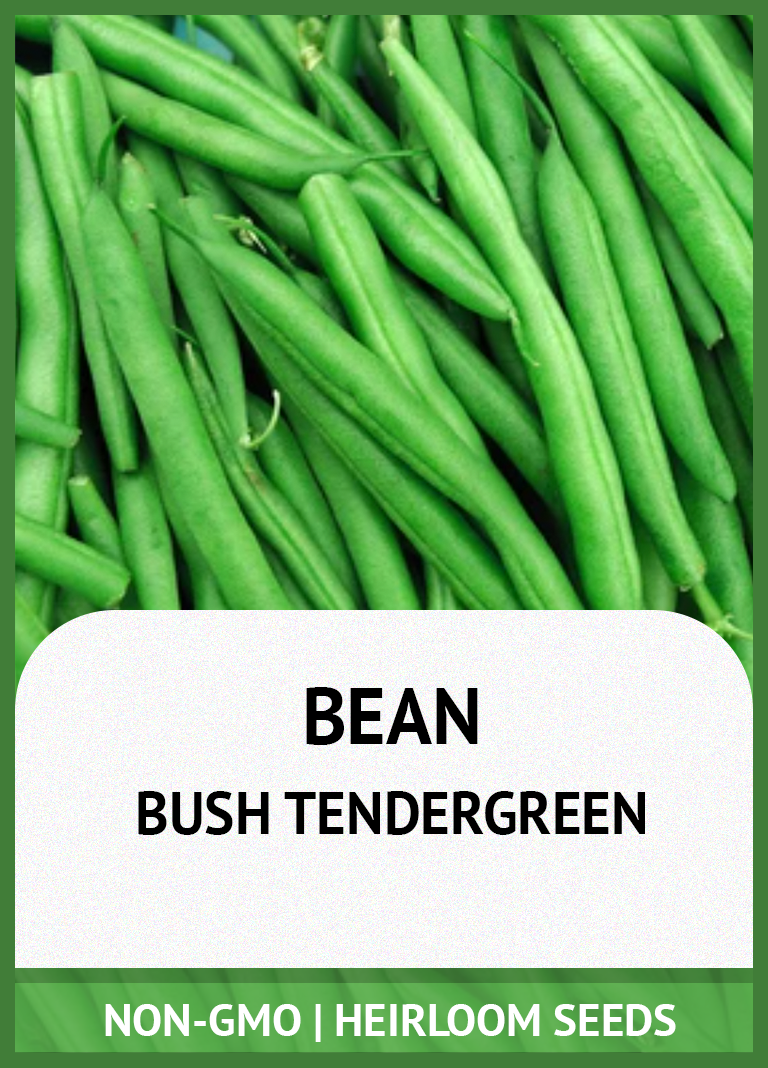Latin Name: Phaseolus vulgaris
Type: Open Pollinated, Heirloom, Warm Season
USDA Zones: 3, 4, 5, 6, 7, 8, 9, 10, 11, 12
Seeds per Ounce: 80
Planting Method: Direct Sow
Sunlight: Full Sun
Height: 20 Inches
Color: Green
Tendergreen Improved is a great home garden bean variety for canning and freezing, as well as fresh eating! It has a very sturdy and productive bush type plant that bears tender stringless pods that are 6" long. It has excellent disease resistance and matures in about 52 days.
The Tendergreen Improved bean, a heat tolerant and disease resistant strain of bean, most likely comes from the research of seed expert Calvin N. Keeney, who is known as the "father of the stringless bean." However, the vegetable we now recognize as the common bean has its roots in South America; some historians as far back as the Pre-Incan civilization in Peru. When Columbus arrived in the New World, he found green beans growing with the maize of the Indians. Columbus and other European explorers introduced this new vegetable to their countries, where it eventually spread to the rest of Europe and all over the world.
GROWING INFORMATION
Sowing:
Direct sow Tendergreen bean seeds outside at least 1 week after the last frost, since beans are quite sensitive to cold. Green bean seeds should be planted in rich, well drained soil with full sun exposure. If you have never planted beans in your garden before, treat the seeds with a powder inoculant to allow the process of nitrogen fixation to begin. Sow the seeds 1" deep and 3" apart, in rows 2'-3' apart, and press down the earth above them for good soil contact. These seeds rot easily in wet soil, so do not over water them. Germination should take place 7-12 days after planting. For companion planting benefits, plant bush beans near carrots, cucumbers, or corn; avoid planting them near onions.
Growing:
After germination, maintain soil moisture; beans have shallow roots, and need water at least once a week if the weather is dry. Mulching the plants helps conserve moisture and discourages weeds.
Harvesting:
Expect your first beans about ten weeks after germination. Daily harvesting improves production; for best flavor and tenderness, pick the beans when they are no larger than a pencil in thickness, or from 4-8" long. Serve or preserve the same day you harvested them for the freshest taste.
Seed Saving:
Near the end of the growing season, allow the beans to dry completely on the vine; the pods will be light brown, and the seeds will rattle inside. Remove the seeds from the pods. After the green bean seeds are completely dry, store them in a cool, dry place for up to a year.
TENDERGREEN IMPROVED GREEN BUSH BEAN GROWING GUIDE

